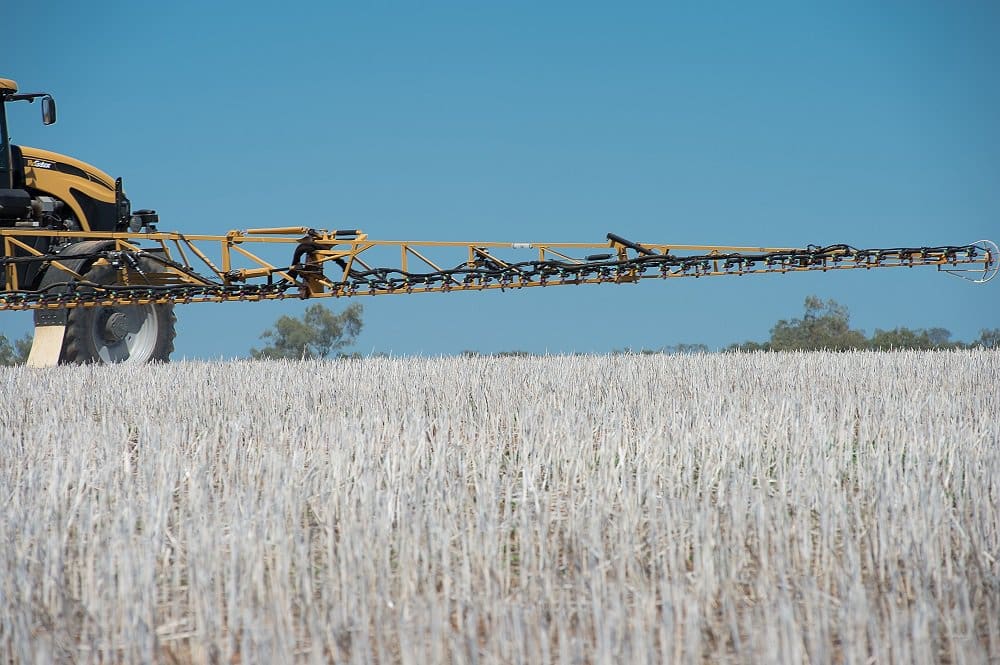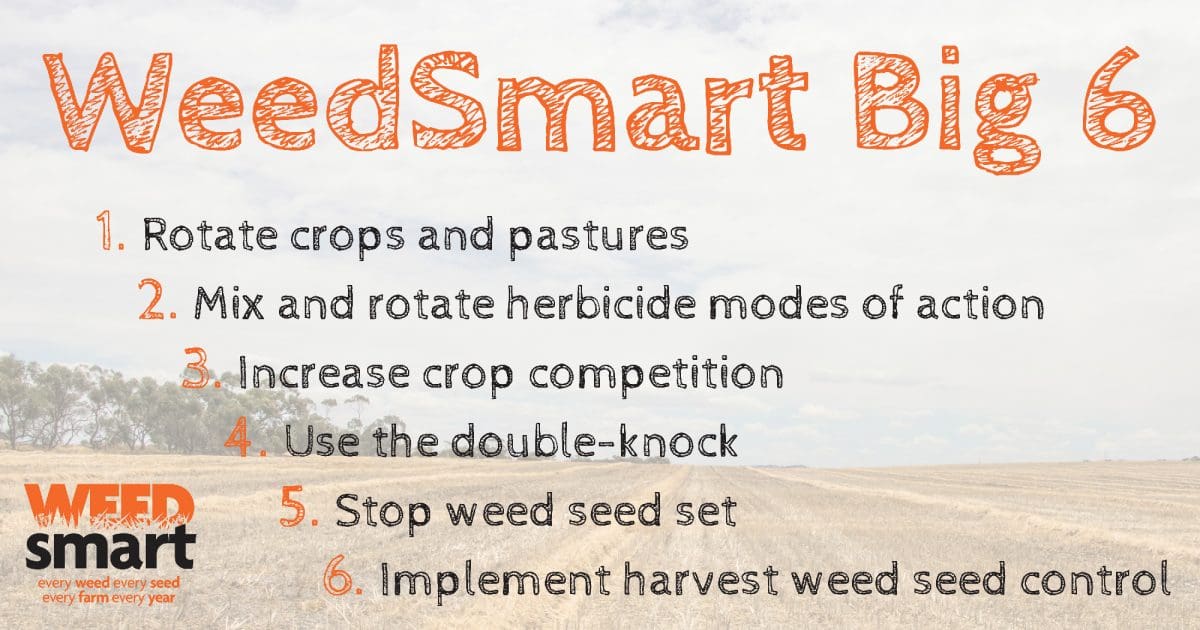WE all know that old saying – ‘one year seeding, seven years weeding’ or some variant of it – and know it is true. But it is easy to overlook just how important weed seedbank management is, until herbicide resistance begins to reduce the efficacy of previously reliable tools.
For a few decades herbicides really took the focus away from seedbank management because the chemical options were so effective at killing weeds that they appeared to be a complete solution to weed management.
 But all along, growers, agronomists and researchers have known it was too good to last. The WeedSmart Big 6 strategy has struck a chord because it is a useful check list that can be used to prompt growers to consider using a selection of the many available weed control tools.
But all along, growers, agronomists and researchers have known it was too good to last. The WeedSmart Big 6 strategy has struck a chord because it is a useful check list that can be used to prompt growers to consider using a selection of the many available weed control tools.
No one tool will do the job – just as herbicides alone have failed, so too will harvest weed seed control or crop competition if they are not part of a planned and multi-pronged assault on the weed seedbank. This is the underlying principle for integrated weed management.
In economic simulations conducted using the RIM and WeedRisk models in 2006, agricultural economists Randall Jones and Marta Monjardino showed that although many things impact on the economic assessment of weed management practices, there is strong evidence that when seasonal risk is taken into account, and the economic assessment is for a period of 20 years, integrated weed management consistently out-performs herbicide-only systems, regardless of the weed in question.
Herbicides provide high level control and are considered an essential component of broadacre cropping systems, however, other tactics that specifically target weeds that have escaped herbicide control are what make IWM systems more profitable in the long-run.
For weeds like wild radish, which produce large quantities of seed that can remain viable in the soil for many years, taking a non-integrated approach of using post-emergent herbicide only has the potential to ‘crash the system’, from an economic point of view.
It will always be a numbers game and IWM consistently wins, usually by a considerable margin, primarily due to lower weed seedbank numbers and conservation of the highly effective herbicide resource for tactical use over time in integrated weed management systems.

Use the WeedSmart Big 6 to prepare an IWM plan for your farm
To develop an integrated weed management (IWM) plan, it is useful to collate some historical information about past weed control activities, test weeds for herbicide resistance and use the WeedSmart Big 6 to match opportunities and weeds with suitable and effective control tactics, remembering that there are many weed control tools at your disposal.
With your agronomist’s assistance, aim to create a plan that maps out when each tactic will be applied. Ideally, try to include three or more of the Big 6 tactics in each crop, fallow or pasture phase.
Diversity is key. Some people prefer to have a set cropping sequence while others choose the crops in response to seasonal or market conditions, but either way it is important to look for ways to add as much diversity to your farming system as possible and to keep downward pressure on weed numbers at every opportunity.
While preventing weed seed production completely is unrealistic in the real world, a focus on the weed seedbank will pay dividends in the long run.
Source: WeedSmart, www.weedsmart.org.au

HAVE YOUR SAY